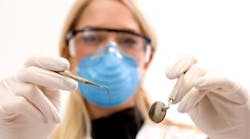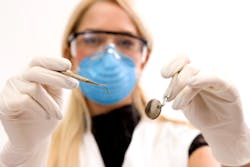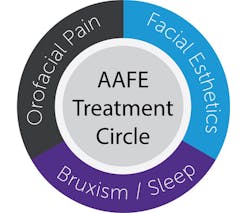Build your practice with expanded providers
Every practice management consultant, author, or speaker agrees the way to build a practice is for the dentist to delegate as many duties as possible to qualified team members. This way, he or she can be more efficient in delivering services to as many patients as possible—but only if there are better treatment outcomes as a result. With that in mind, let's look at how dentists build their practices with midlevel providers or dentist extender personnel.
From the outset, let's be clear that this article is not meant to be part of any political debate about midlevel providers in dentistry, specifically dental therapists. Let's take a look at this topic from an objective point of view. Certainly, there are two sides to every issue and this is no exception.
It would be instructive to look at medicine as a lesson on this topic. The debate that was once fierce in medicine is pretty much over—there are a number of alternate medical providers (e.g., physician assistants, nurse practitioners); you've probably had visits with them where you never saw a physician. The only debate in medicine is if these health-care providers are called midlevel providers or physician extenders (names every physician assistant and nurse practitioner dislikes), as they are independent primary care providers. The point is these professionals certainly are able to expand access to care and have been proven to provide excellent care within established guidelines.
READ MORE | Are you a Super GP?
Expanded hygienists
The history of dental hygienists is instructional here—this debate, which continues today, goes back to the 1920s on some levels. One state dental board member told me that dental hygienists were only granted the ability to scale subgingivally there in 1994. Some states now allow dental hygienists to have independent practices while some allow independent hygiene in the dental practice. Hygienists in many states are allowed to deliver local anesthetic. There is even one state today where dental hygienists have, with required training, been given the green light to deliver Botox and dermal fillers. There is universal agreement on one point—dental hygienists are outstanding professionals who have been entirely capable of providing any treatment allowed under their scope of practice once properly trained. Most dentists today rely on dental hygienists to run a significant part of their practices.
Expanded assistants
The same is true of expanded function dental assistants (EFDA; also called AQP in some states), which we have had in our practices over the years. As a dentist, I remove the decay and prepare the tooth for the restoration, and the EFDA places the restoration. This makes me more efficient as I can see many more patients in a day. What we can learn from our past experience as a profession with dental hygienists and EFDA is that with appropriate training, "midlevel providers" can help a dentist provide excellent treatment to more patients than he or she can do alone.
Expanded therapists?
Now we come to the dental therapist issue. Dental therapists are licensed oral health-care professionals who can provide therapeutic, clinical, and educational dental services to patients. They can provide restorative treatment to patients of all ages and can extract primary teeth. All of this occurs under the supervision of a dentist. Dental therapists exist in approximately 50 other countries and originated in New Zealand in the 1920s, approximately the same time that dental hygiene began in the United States. Currently, dental therapists exist in two states, Alaska (since 2003) and Minnesota (since 2009). In 2015, the Commission on Dental Accreditation (CODA) established an accreditation process for dental therapy education programs. Now it will be up to state legislatures, national and state dental associations, and state dental boards to determine the future of dental therapist professionals as to when or if this will be available to the general public in the future.
I don't know the future of dental therapists as a profession in the United States, although it does look like it is leaning in the direction of becoming more widespread with the CODA guidelines. Imagine for a moment what a dental practice of the future may look like with EFDAs, expanded dental hygienists, and dental therapists. What, if anything, is there for the dentist to treat with all of these trained professionals who can deliver many of the services that dentists have been doing previously?
Many patients today see dentists as only teeth mechanics and not "real doctors." It may surprise you to know that many, many dentists see themselves and others only as teeth mechanics and not "real doctors." If you are only a teeth mechanic whose mission is only to fill holes in teeth, then yes, you will be seriously threatened by dental therapists and expanded dental assistants because they can be as well-trained as any other teeth mechanic. I have seen with my own eyes restorations placed by an EFDA with better anatomy and occlusion than many dentists are capable of.
READ MORE | Getting new patients with Medicare
Expanded function dentists
Now let's look at a general dentist who, in addition to being a teeth mechanic, has been trained to treat patients like a "real doctor." We have seen over the last two decades how the scope of dental practice has expanded for dentists. Thirty years ago, who would have imagined dentists doing the vast majority of all endodontics, short- and long-term orthodontics, surgical placement of dental implants, bruxism/dental sleep medicine treatment, trigger point therapy, and Botox and dermal fillers? We discovered that we can be pretty good at these disciplines with the right training. These dentists examine the entire head and neck and the patient's airway in addition to intraoral examinations.
Figure 1: AAFE treatment circle shows interrelated disciplines which need to be addressed together.
The last three areas listed are known as the American Academy of Facial Esthetics (AAFE) treatment circle, as they are all related comorbid conditions (figure 1). What would these general dentists' practices look like with dental therapists, expanded function assistants, and dental hygienists giving local anesthesia and Botox and dermal fillers? This dentist can then be a "real doctor," diagnosing and treating patients much more comprehensively, while providing new services to millions of patients affected by facial pain, bruxism, and obstructive sleep apnea. Obstructive sleep apnea affects approximately 40 million patients in the United States; 90% are undiagnosed and most of these patients have bruxism and TMJ disorders. (1) With a recent JADA study showing that one out of six patients has TMJ/orofacial pain, many of which are comorbid with bruxism and obstructive sleep apnea, these midlevel providers can be the teeth mechanics, while allowing dentists to really treat those affected by these disorders. (2) This greatly expands the access to care to patients for a multitude of disorders that patients have lived and suffered with for years.
Figure 2: AAFE faculty Dr. Brianna Schraw instructs an attendee in Botox therapy at the recent Hinman Dental Meeting.
Let's see where the dental therapist debate goes. Our AAFE surveys also show that 98% of AAFE dental members employ numerous midlevel providers, including expanded hygienists and assistants. Some of these members also employ nurse practitioners, which will be explored in a future article.
Get trained
Certainly, you should get trained in areas that can expand your practice right now (figure 2). You can participate in expanding access to care by offering more services to patients who need it, like the over 9,000 AAFE dentist members who have already proven this concept in their own offices while increasing their monthly production by an average of $32,500. This creates a healthy practice that can add the right adjunctive health-care professionals to provide excellent patient treatment with better therapeutic outcomes than ever before. That should be the goal of every dental professional.
References
1. Young T, Palta M, Dempsey J, Skatrud J, Weber S, Badr S. The occurrence of sleep-disordered breathing among middle-aged adults. N Engl J Med. 1993;328(17):1230-1235.
2. Horst OV, Cunha-Cruz J, Zhou L, Manning W, Mancl L, DeRouen TA. Prevalence of pain in the orofacial regions in patients visiting general dentists in the Northwest Practice-based Research Collaborative in Evidence-based Dentistry research network. J Am Dent Assoc. 2015;146(10):721-8.e3. doi: 10.1016/j.adaj.2015.04.001.
Louis Malcmacher, DDS, MAGD, is a practicing general dentist and an internationally known lecturer and author. Dr. Malcmacher is president of the American Academy of Facial Esthetics (AAFE). You can contact him at (800) 952-0521 or at [email protected]. Go to facialesthetics.org to find information about training in dermal fillers, orofacial pain, implants, and more. You can also download his resource list and sign up for a free monthly e-newsletter.



